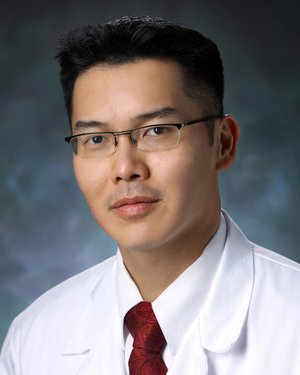Takeaway
During surgical residency training, I learned how to operate. In practice, I learned how to decide WHETHER to operate based on individualized versus protocol-driven parameters.

Passion in the Medical Profession | January 10, 2024 | 2 min read
By Hien Tan Nguyen, MD, MBA, MPH, Johns Hopkins Medicine
It was only 9:30 in the morning, and I was already exhausted. A trauma call five days ago was rife with MVCs, GSWs, and ICU admissions typical of a major metropolitan city. The operations the day prior took longer than expected, causing a domino effect that sent me into bed around one in the morning. The next day, I talked with a 455-pound man who was wheelchair-bound, on many medications including Plavix to prevent his cardiac stents from clogging, and had painful bilateral groin hernias that extended down toward his knees.
Both he and his wife looked like they’d driven all night, because they had. Six surgeons in his town, county, and state had refused to operate on him, citing extremely high risks for everyone involved. The patient was hoping that I would be lucky number seven.
One of the lessons I pass on to my residents was something I learned during my own training that continues to reverberate every day: in residency, you learn how to operate. In practice, you learn when to operate and when NOT to operate.
This teaching point yelled in my caffeinated brain. Six out of seven surgeons had arrived at the same conclusion. This wisdom of the learned crowd should be heeded. What could the seventh surgeon possibly do that six others couldn’t? Perhaps I felt the weight of the fatigue they carried. Maybe I understood the certain acute mortality of doing nothing. Perhaps I was inspired by the fact that they never gave up, even after six rejections. I agreed to operate. They cried.
Finally, after nearly six hours of surgery, the 150-centimeter of edematous small bowel entrapped in the left scrotum and the 35-centimeter of twisted colon in the right scrotum was reduced and replaced back to their anatomic position, both inguinal hernias were repaired, all performed minimally invasively through three small incisions. The anesthesiology team did a fantastic job, and he was stable throughout the operation, but he was still going to the ICU postoperatively as suggested by his cardiologist. He left the ICU one day later, and then left the hospital three days after that for his long drive home.
I saw him and his wife again in the postoperative clinic two weeks after they were discharged. It was another Tuesday as I entered his room; he stood up from his chair, walked to me, and gave me a hug. This time, we all cried.
This piece expresses the views solely of the author. It does not necessarily represent the views of any organization, including Johns Hopkins Medicine.

